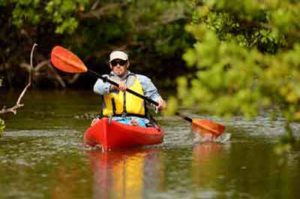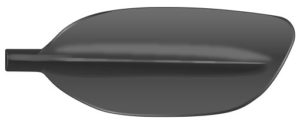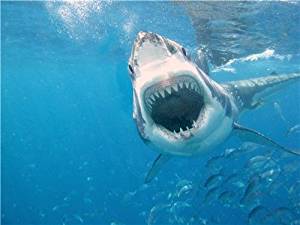Not all kayaks are created equal. Therefore, why do most people assume that the paddle they choose to go kayaking with will be? The truth is; there are several different kayak paddle styles available and choosing the right one could easily make your outdoor adventures much more enjoyable. As proof of this fact, we are here to discuss how to choose a kayak paddle and how choosing the right one can help you enjoy your adventure more.

Carefully Consider Your Kayak Paddle Length
Size definitely matters when it comes to kayaking. To figure out the length of your ideal kayak paddle, you need to keep in mind two different things at one time; your size and how wide your kayak is. This is because most kayaks are between 23” or less and 32” up. There is a wide range of widths. If you choose a paddle that is designed for a very wide kayak, but your kayak is only 20” wide, you could end up with a lot more weight on the paddle ends than you need. The same is true if you are less than 5’ tall, but you are using a paddle that was designed to be used by someone 6’ or more. Beyond that, the length will also depend on your style of paddling. If you enjoy a relaxed style of paddling your kayak, you will want a low-angle paddle, which is going to be slightly longer than the more aggressive, faster, high-angle paddle. The kayak paddle will have a shaft that determines how long it is and there are different shafts for you to choose from. A person with small hands, will not have an enjoyable day on the water if their paddle is too thick and a person with larger hands probably will not enjoy a thinner shaft. You may also want a curved shaft if you want to increase your comfort while paddling.
Choose Your Kayak Blade
 Typically, there are only a few types of blade material used on a kayak paddle. There are fiberglass blades, which are ideal for touring since they are somewhat lightweight and durable, carbon fiber, which is very lightweight and ideal for multi-day trips, and all other materials including; nylon, plastic, and aluminum. The plastic, nylon, and aluminum paddles may all have pros and cons, but they are the most affordable and you do not have to put as much effort into caring for them. Many people recommend that you have a good paddle, either the carbon fiber or fiberglass, but carry one of the other types as a spare in case you need it.
Typically, there are only a few types of blade material used on a kayak paddle. There are fiberglass blades, which are ideal for touring since they are somewhat lightweight and durable, carbon fiber, which is very lightweight and ideal for multi-day trips, and all other materials including; nylon, plastic, and aluminum. The plastic, nylon, and aluminum paddles may all have pros and cons, but they are the most affordable and you do not have to put as much effort into caring for them. Many people recommend that you have a good paddle, either the carbon fiber or fiberglass, but carry one of the other types as a spare in case you need it.
Blades are also available as feathered and nonfeathered. Nonfeathered blades are positioned in a way that they are in line with one another, which means that both blade ends are tilted in the same way, typically straight up and down. Feathered blades are slightly offset to resist wind resistance and to protect your wrist from getting as tired when paddling. The smaller the angle, the easier it will be on your wrists. When traveling over large areas of water, avoiding wrist fatigue will be beneficial.
